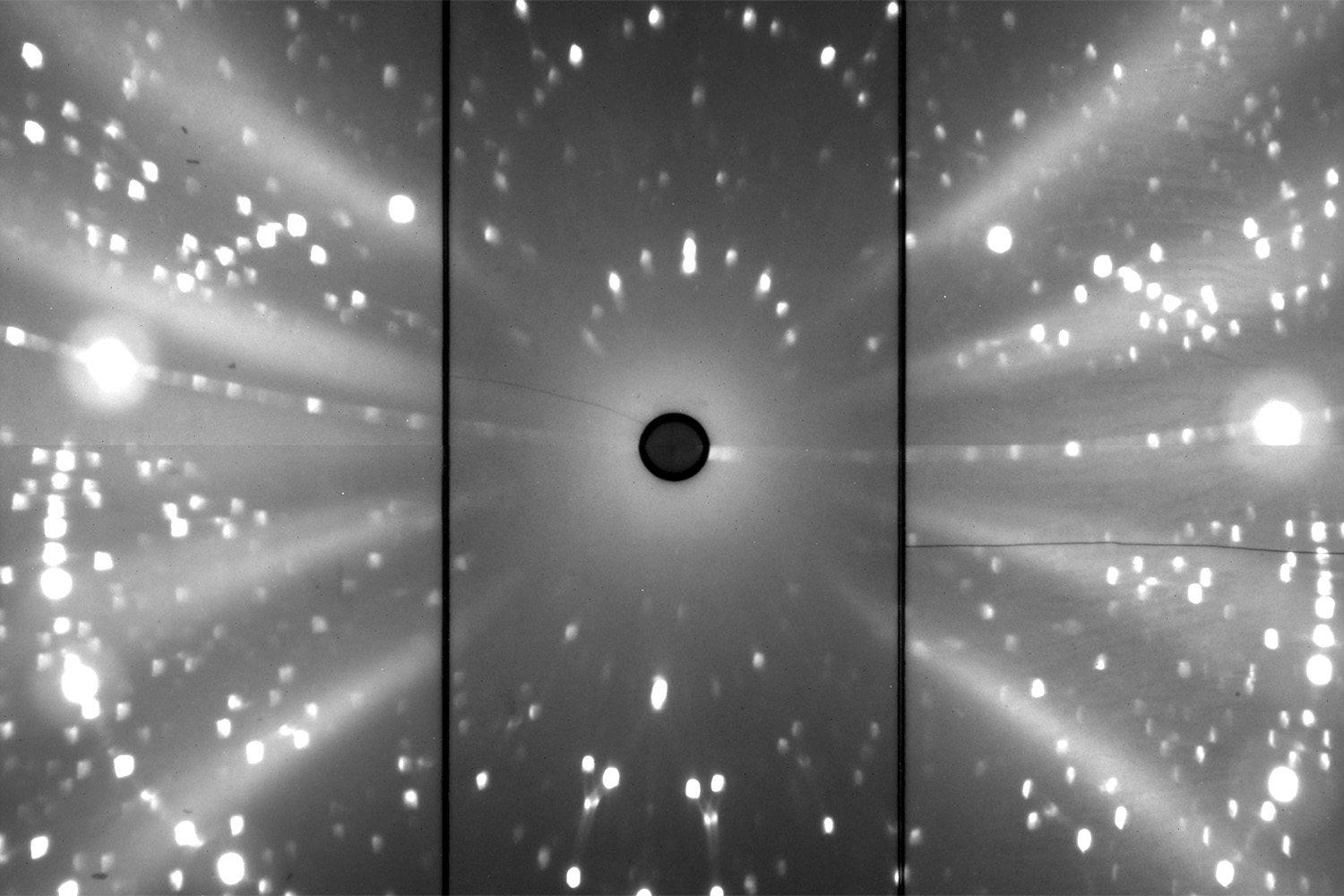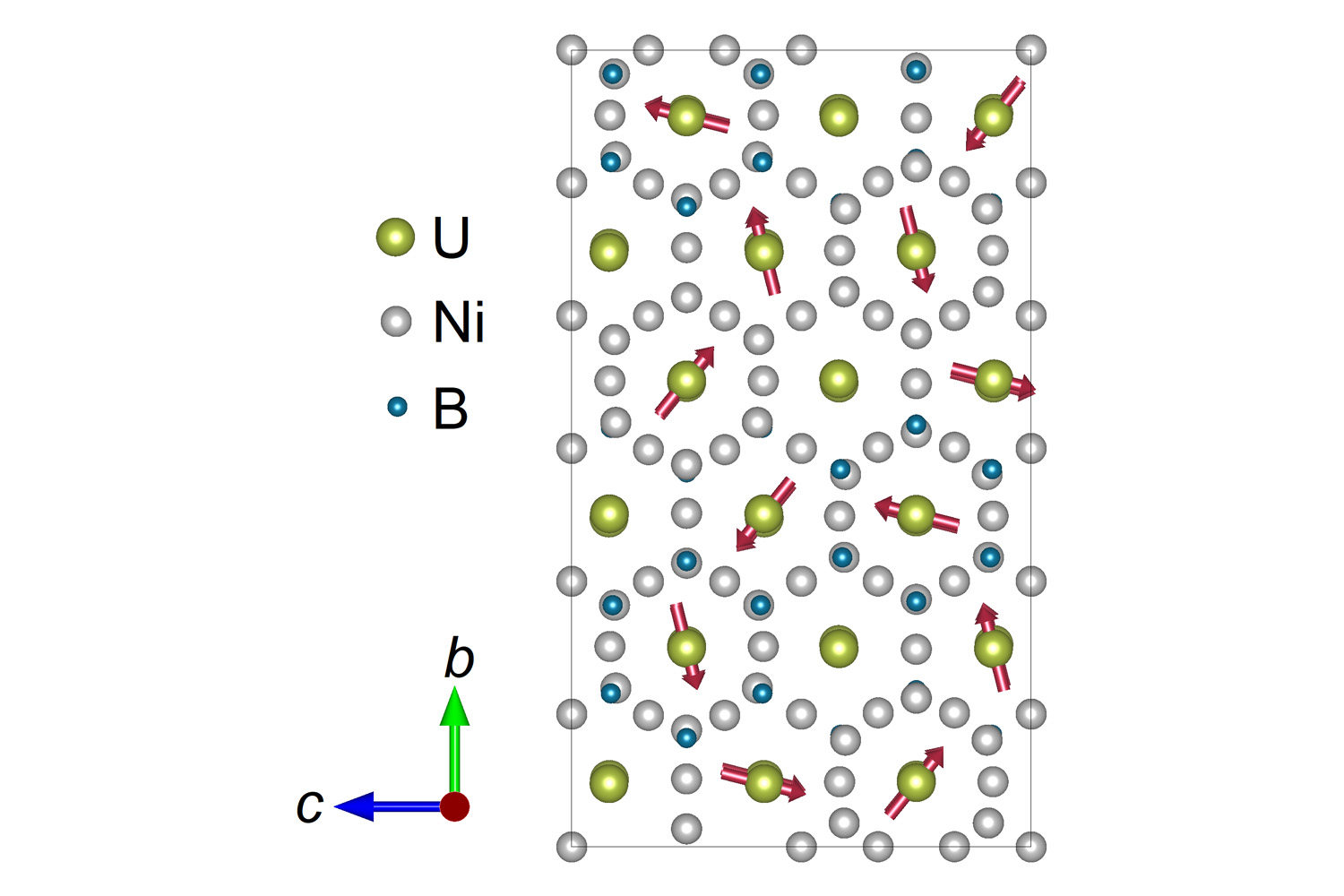Magnetic Vortices in Materials Research Microscopic insights into quantum magnets by means of neutron scattering
In order to investigate the atomic properties of quantum magnets, experiments at large research facilities are often necessary. Thus, an international team of scientists under the leadership of the Institute of Condensed Matter Physics at TU Braunschweig went to France: In elaborate experiments, the structural and magnetic properties of UNi4B were analysed at the Institute Laue-Langevin in Grenoble. This material is characterized by its complex magnetic structure and the resulting novel magnetoelectric effects.

Neutron Laue image of UNi4B. Photo credit: Jannis Willwater/TU Braunschweig
Normal bar magnets are well known from everyday life and school physics lessons. These are ferromagnets in which the atomic magnetic moments all point in the same direction. In nature, however, there are many other forms of magnetism. For example, in antiferromagnets, adjacent magnetic moments are antiparallel to each other. In modern magnetic materials, however, the magnetic structures often deviate from such simple arrangements – with far-reaching consequences for the material properties. One such system, the intermetallic compound UNi4B, has now been studied at the Institute of Condensed Matter Physics in collaboration with an international team of scientists.
Current changes magnetic properties
In UNi4B, the magnetic moments form a vortex-like structure. This is made possible by the fact that not all magnetic moments in the material participate in the magnetic order – this is referred to as “partial magnetic order”. This leads to novel magnetoelectric effects in the material. This means that the magnetic properties of the material can be changed by applying an electric current.
An analogy from school lessons would be a straight conductor with a current flowing through it. The current in the conductor generates a circular magnetic field, similar to the magnetic vortices in UNi4B. Changing the current through the conductor affects the magnetic field, just as applying another magnetic field affects the current in the conductor. This also happens at the quantum level in UNi4B, which is thus a suitable object for studying such magnetoelectric effects. These effects will enable new material functionalities in the future.
How a complex magnetic structure is determined
This requires experiments that cannot be performed in normal university laboratories. In the case of UNi4B, the measurements were carried out using neutron scattering at the Institute Laue-Langevin in Grenoble. In this process, neutrons are generated in a research reactor and directed onto the sample to be investigated. The neutrons are then scattered by the sample at the atomic level, and the resulting scattering pattern can be analysed.
A decisive advantage of neutrons compared to X-rays, for example, is that neutrons themselves carry a magnetic moment. Thus, not only the structural but also the magnetic properties of solids can be investigated directly by means of neutron scattering. At UNi4B, this was used in experiments on powder and single crystal samples, and at very low temperatures down to -273.05°C.
The results were published in the journal “Physical Review B” and were also selected as a Scientific Highlight in this year’s Annual Report of the Institute Laue-Langevin.

Magnetic structure of UNi4 B. Photo credit: Jannis Willwater/TU Braunschweig
